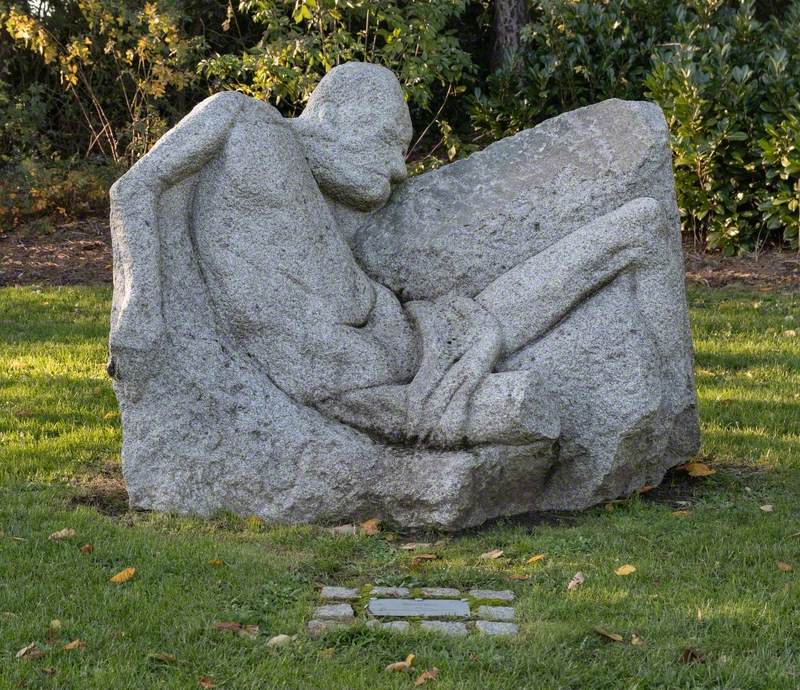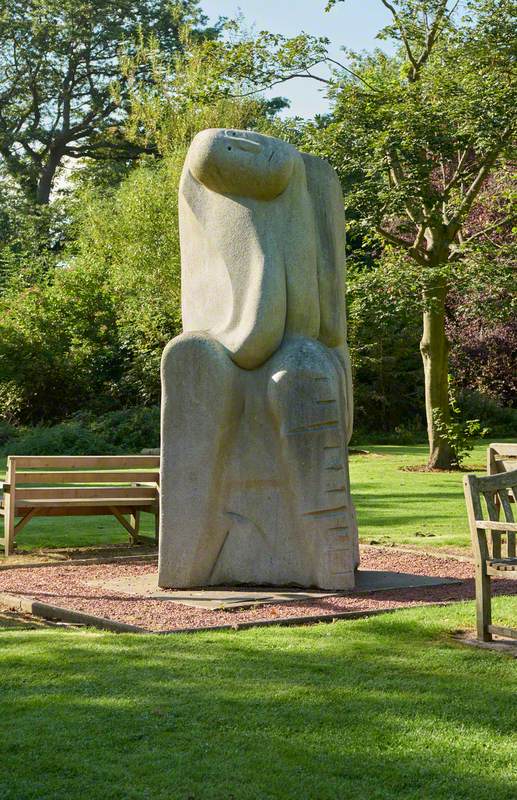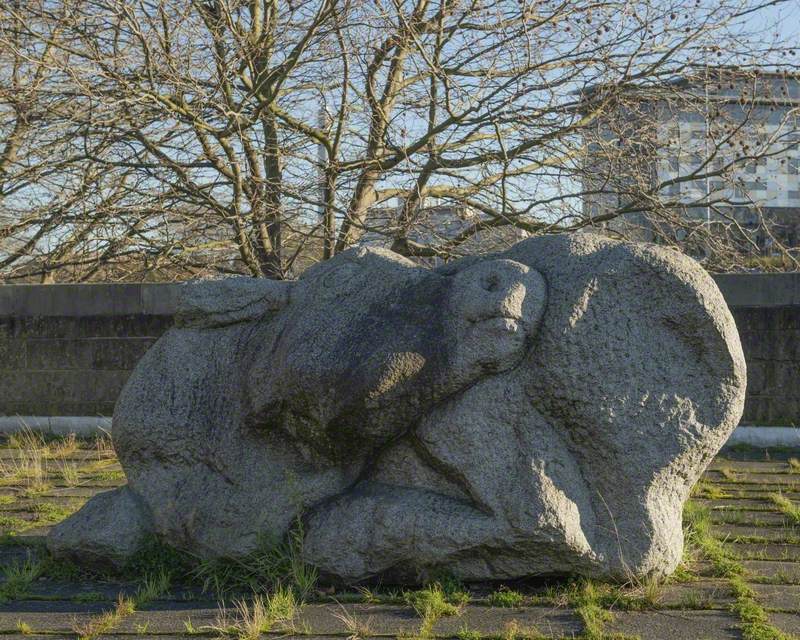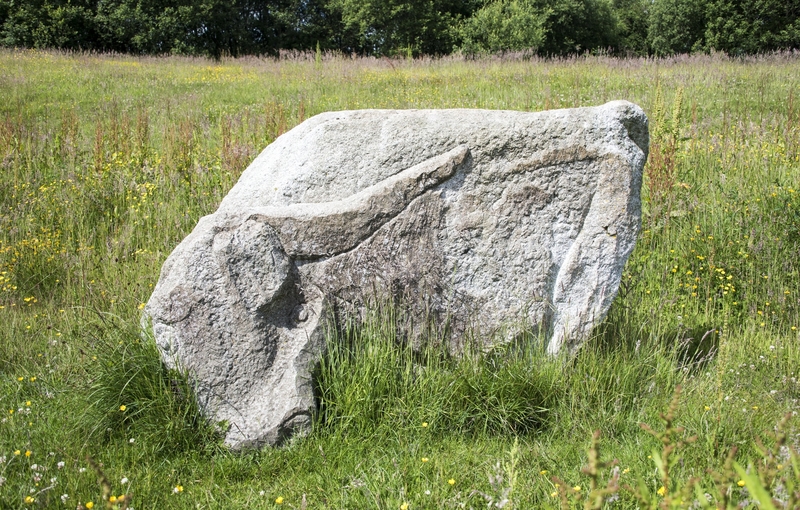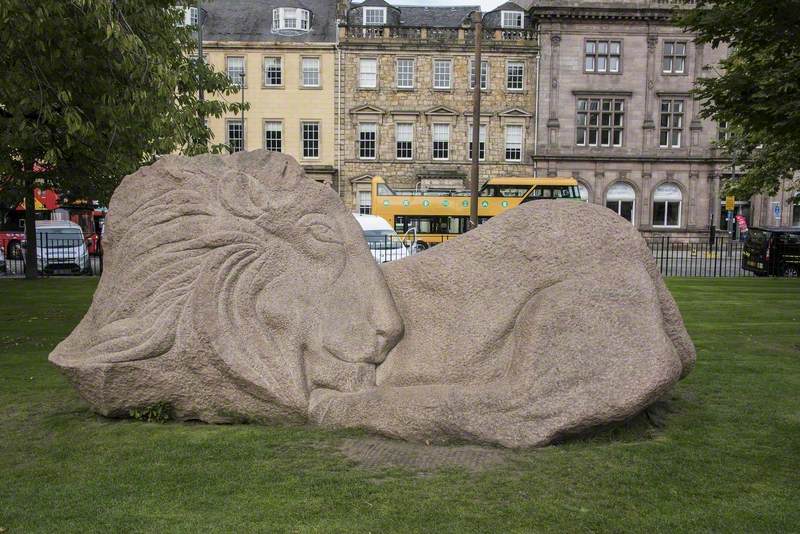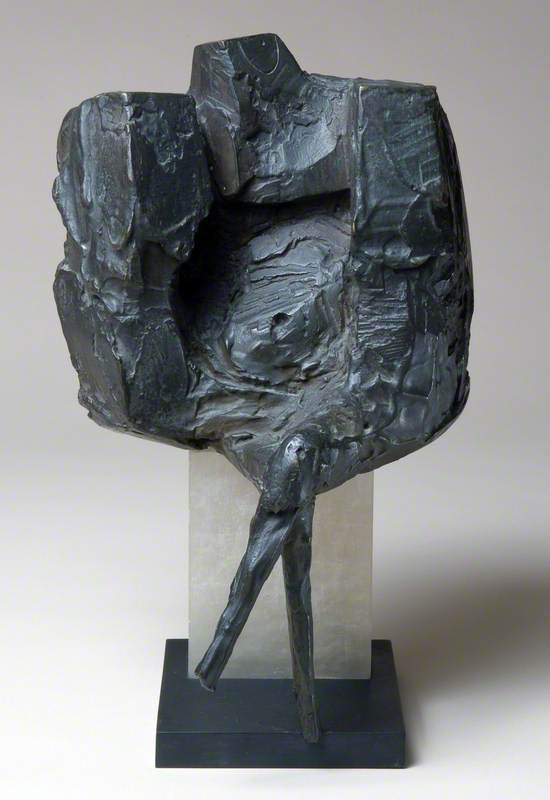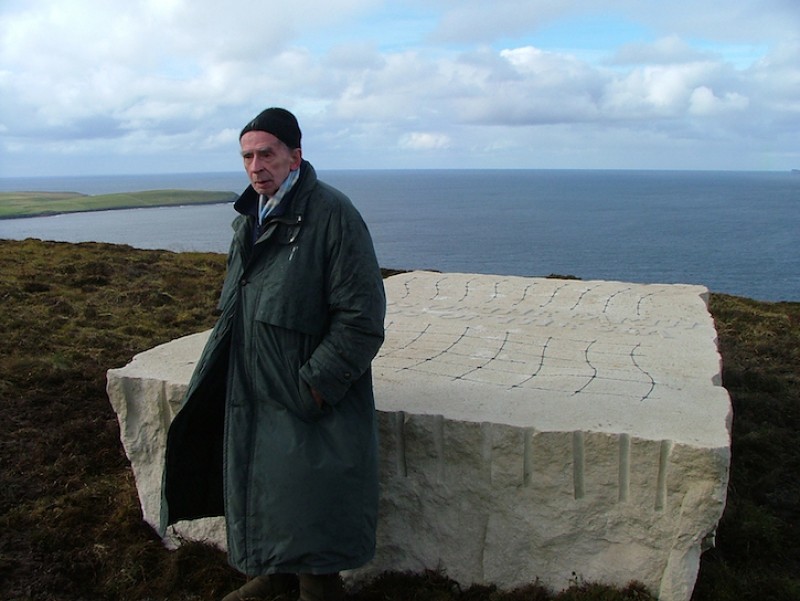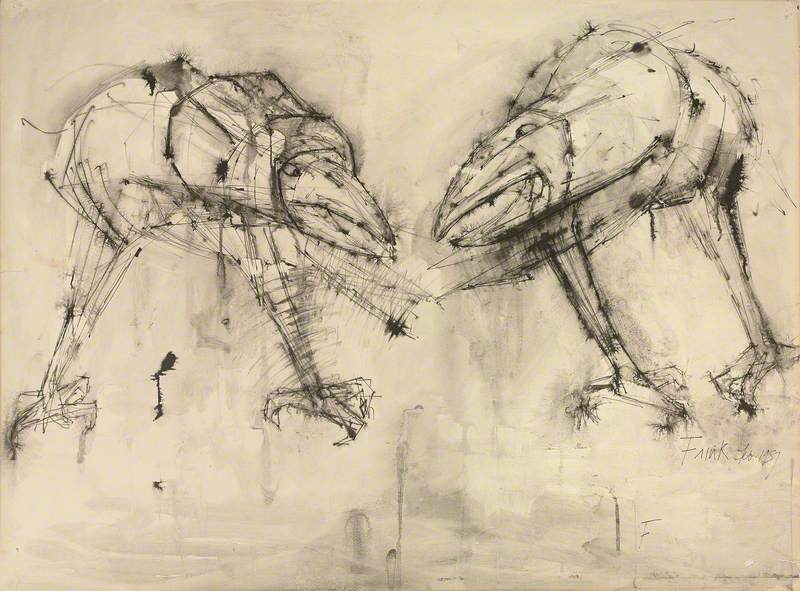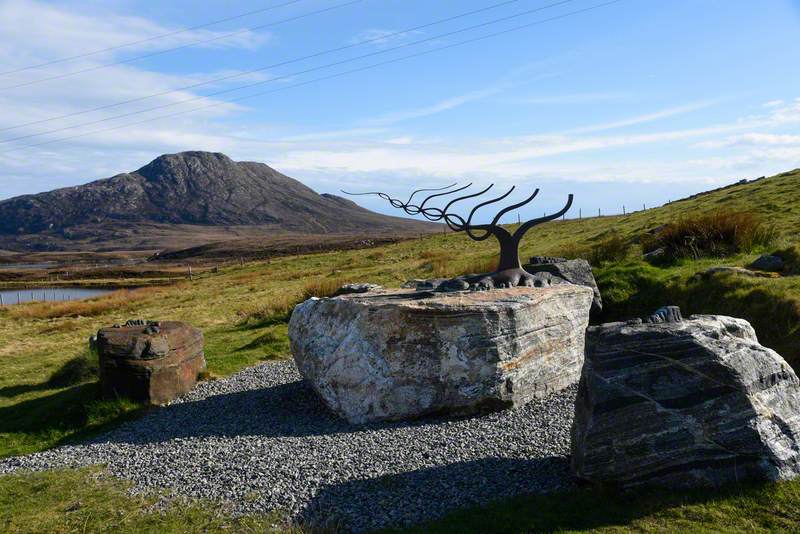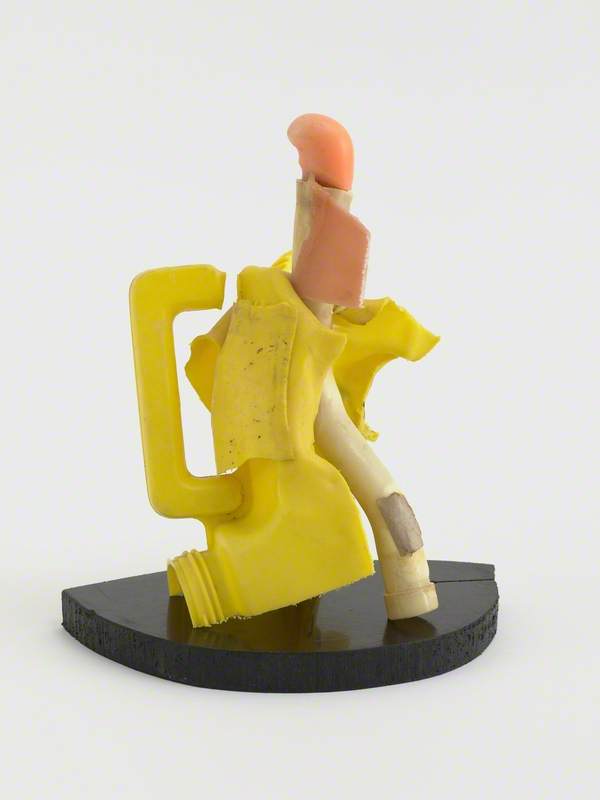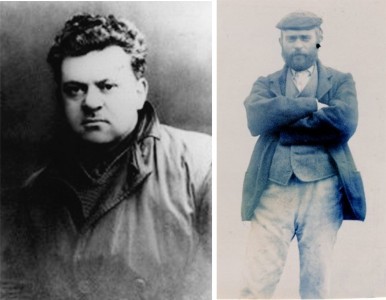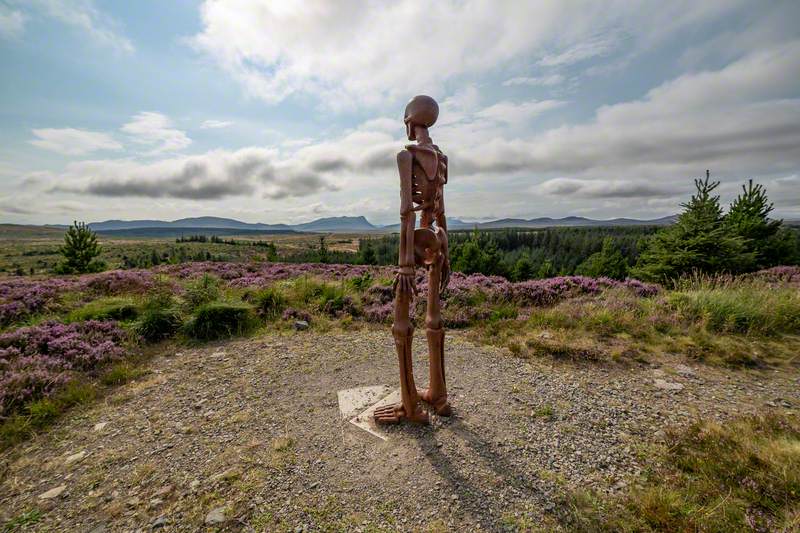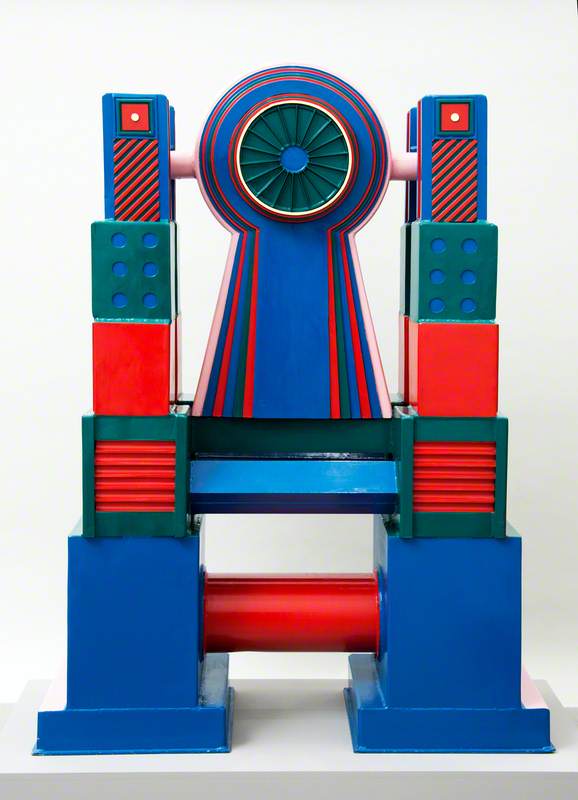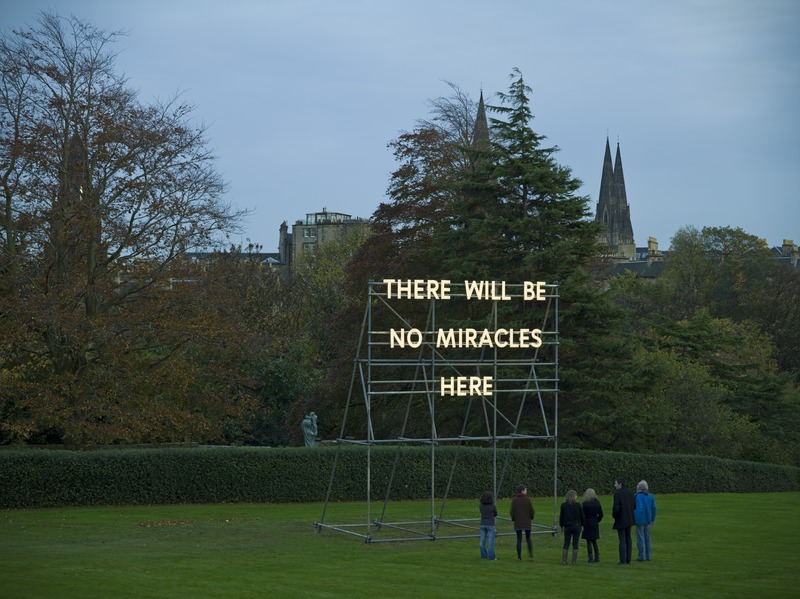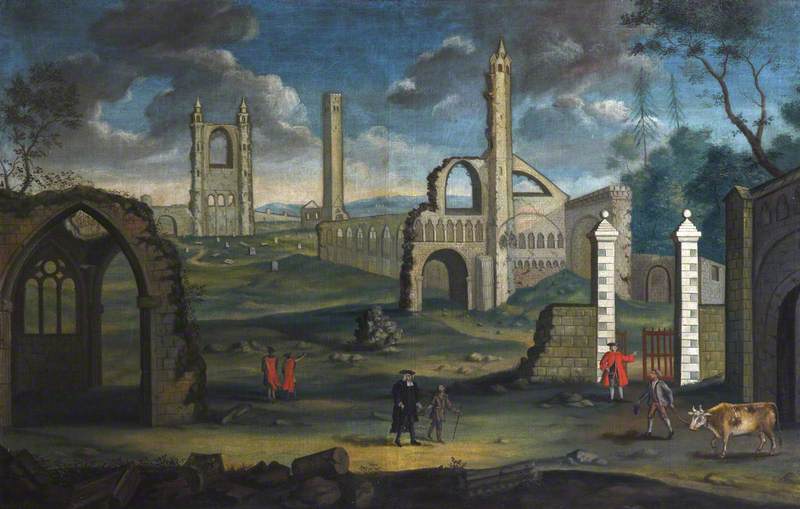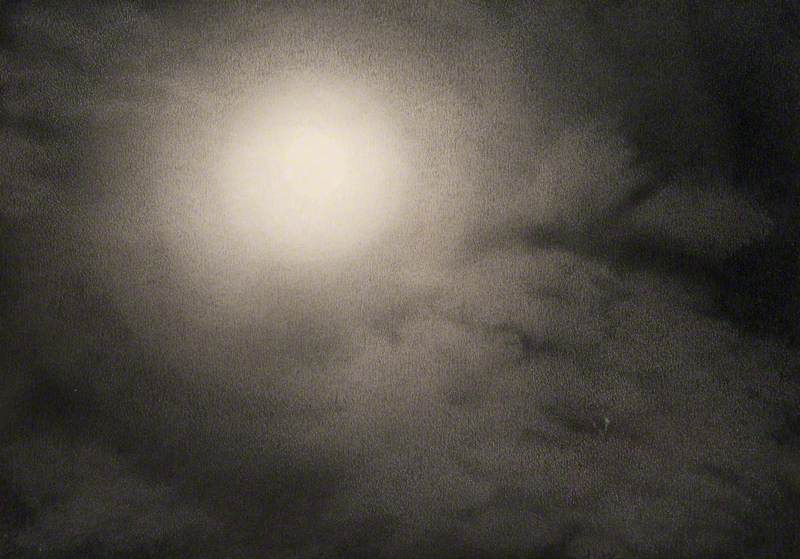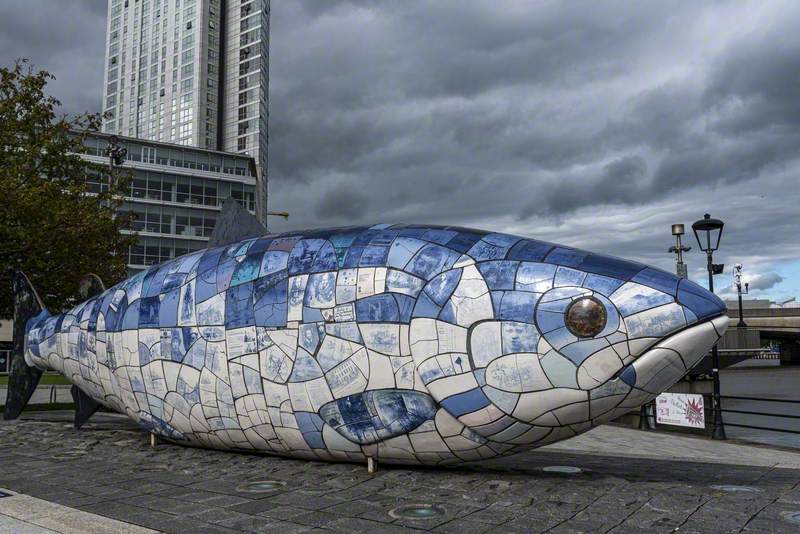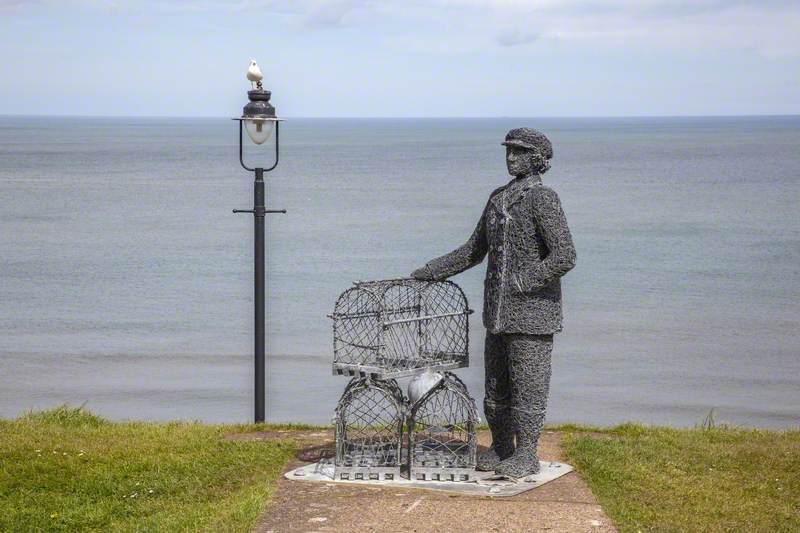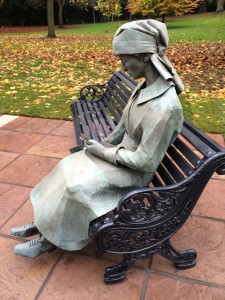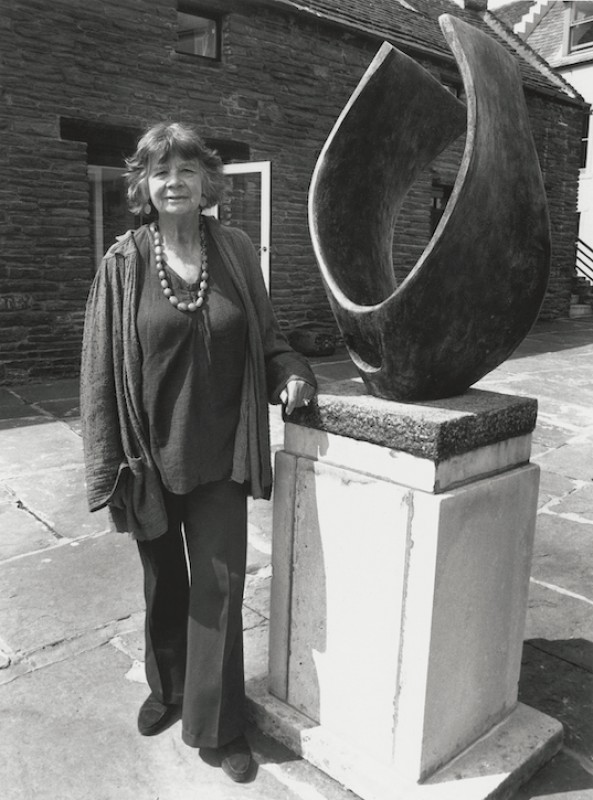Ronald Rae (b.1946) is a prolific artist who has worked continuously from the age of 15. In addition to a lifetime of hand-carving large granite monoliths, Rae has also developed parallel creative paths through graphic work, small-scale sculptures, collages, found objects, poetry and musical improvisation.
Ronald Rae
Rae's earliest years were spent at his grandfather's house in Alloway, Ayr. His grandfather had served in the First World War, and his father in the Second. Rae became aware at an early age of vast amphitheatres of conflict and drama, which swept away old certainties of a fixed moral order.
Rae's visual imagination was stirred into action through observing nature on outings with his grandfather. It was also fed by his father showing him war photos and drawings, and through seeing vivid and surreal cartoons within the comic magazines and newspapers of the 1960s.
Primary school was a time of learning and play, but Rae – unable to tolerate didactic teaching – failed his secondary education for poor attendance and flouting authority, including making caricatures of his teachers. On leaving school aged 15, he created a football cartoon for the Ayr Advertiser.
In the same year, he selected a boulder that had fallen from a stone wall. Entirely untutored, Rae carved his first work in stone, titled In the Beginning.
In the Beginning
1962, stone carving by Ronald Rae (b.1946). Collection of the artist 
From the age of 16, Rae educated himself at the Ayr Carnegie Library. He became a studio assistant at the Glasgow School of Art at 19, then, through the support of Eric Schilsky and Charles d'Orville Pilkington Jackson, joined Edinburgh College of Art in 1968.
He left after one year, having pursued granite carving in preference to following the curriculum. Rae returned to Ayrshire and continued carving The Deposition of Christ (1978), which had a gestation of ten years.
The Deposition of Christ
1978, granite by Ronald Rae (b.1946). Rozelle Park, Ayr 
Rae's graphic work and sculptures in bronze and steel caught the attention of Mike Bailey, an early curator of The Maclaurin Trust, and this led to several solo exhibitions. His exhibited works included Condor, which was acquired by the Trust.
His first show in 1977 was visited by a US art patron, Morris Bear Squire, who 'bought the exhibition' and invited Rae to a residency in Chicago, joining other artists, including Roland Poska. There, Rae had an artistic flowering and exhibited at two galleries in Chicago. However, he struggled with the pressure of success and left the residency to join a family who were moving by road to Alabama.
Rae travelled back to Ayr and in 1978 was employed as a parks assistant. This arrangement was supported by Struan Stevenson, who was then Chair of Kyle and Carrick Council's Leisure and Recreation Committee. Rae was given free rein to carve the religious cycle of five of five granite monoliths, The Tragic Sacrifice of Christ.
Golgotha Madonna
1979, granite by Ronald Rae (b.1946) 
These sculptures were gifted to the people of Ayr, and were unveiled in November 1979 by George Younger, the then Scottish Secretary, in a ceremony which also celebrated the acquisition of Henry Moore's Working Model for Draped Reclining Figure.
Working Model for Draped Reclining Figure
(bronze edition of 9+1) 1976–1979
Henry Moore (1898–1986) 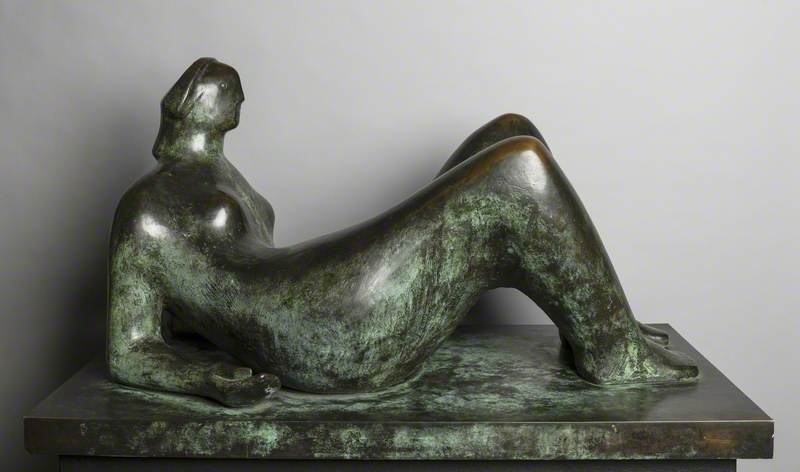
In 1978, Rae met his second wife, Pauline MacDonald, who became a life-long advocate for his work, promoting it for public exhibition and private sale. MacDonald studied History of Art, graduating with honours in 1989, and had her own practice in tapestry. With her Christian faith and a passion for animals, MacDonald had a clear influence on Rae's output from the 1980s until her death in 2019.
Ronald Rae developed a biomorphic style with varying degrees of abstraction, adopting Michelangelo's principle of 'finding the figure within the stone'. He described the contrast between the violence of the right hand, holding the hammer, with the tenderness of the left hand, guiding the delicate flow of the chisel. These forces came together to reveal the stone's inner form.
In contemporary terms, Rae's direct carving and figuration were unfashionable, but he freshened the genre through his eclectic fusion of influences, from Primitivism to modernist abstraction. His subjects included religion, war and animals. Rae's approach was recognised and discussed within the programme of the Frink School of Figurative Sculpture. He went on to exhibit widely, including at the Yorkshire Sculpture Park (2002–2004).
Rae's found objects and assemblages are varied in style and generally contain a conceptual element. One exemplar is I. N. R. I. from 2004. The suitcase – symbolising homelessness, refugee status or the core essential of what is precious to us – is a recurring motif in Rae's work.
I. N. R. I.
2004 by Ronald Rae (b.1946) 
In 2008 there was a concerted push, backed by the public and several MSPs, for Rae's Lion of Scotland to be adopted for the new Scottish Parliament. The acquisition was opposed by the Scottish Parliament's Art Advisory Committee, and the issue became polarised. Notwithstanding, Rae continued to attract important collectors and sold granite sculptures across the UK, with one work exported to the USA.
Rae's large granite sculptures can be viewed at locations across the UK. The largest group of 12 works is at the Creetown Whisky Bond.
Rae's graphic series are endlessly inventive, and chimaeric in their development. The works feature figuration throughout. The forms often reveal suffering but, within this, also a fundamental dignity. His early Expressionist style from the late 1970s and 1980s was later replaced by metamorphic Surrealism, fantasy and abstraction, imbued with human narratives, spiritual depths and counterpoint.
Octogenerian Lovers
1977/1978, India ink on paper by Ronald Rae (b.1946) 
In 2019, Rae's elaboration of H. C. Andersen's Sagor, containing around 90 drawings, was acquired by the National Galleries of Scotland.
Sagor
(detail), 2013, Biro on paper by Ronald Rae (b.1946) 
There are bursts of Shakespearian 'relief humour' in Rae's work. Cartoon elements comparable to those of James Gillray make an appearance, and find their foil in Rae's refined technique and dignity of purpose. A major series of Biro drawings on double-page spreads of The Daily Telegraph runs to approximately 1,400 works.
Chanel N°5, from 'The Daily Telegraph' series
2017, Biro on newspaper by Ronald Rae (b.1946) 
Go up to Lebanon, and cry, from 'The New York Sutherland Bible'
2005, ink on paper by Ronald Rae (b.1946) 
Rae extends the depth of his work through the intensity of application of media, his inventive use of materials and layered approaches. He has created multiple 'found objects' that defy classification – hybrids of painting, sculpture and collage. He has carved wood, metal and small stones, and has focused the rays of the sun to 'carve' laurel leaves.
Universal Individual 1
1999, tin, copper & mixed media over wood by Ronald Rae (b.1946) 
Rae created an extended account of his bereavement in the form of an inscribed family Bible, Letters of Faith to Myself (2020), which incorporates wider themes of loss and homelessness. His recent works have become allegorical and are infused with colour.
Letters of Faith to Myself
(detail), 2020 by Ronald Rae (b.1946) 
Wheat and
2022, mixed media on paper by Ronald Rae (b.1946) 
Rae's oeuvre explores the human stories within the turbulent twentieth and twenty-first centuries, and references art history as far back as the Lascaux cave painters. His work appears in public collections across the UK, and has been acquired by a range of discerning collectors. Rae's output of around 8,000 works, including a large body of 'undiscovered' graphic and sculptural work, will no doubt provide a rich seam of material for future art historical research.
Robert De Mey, biographer
Further reading
Robert De Mey, Ronald Rae: An Inner Life, Unicorn, 2023
